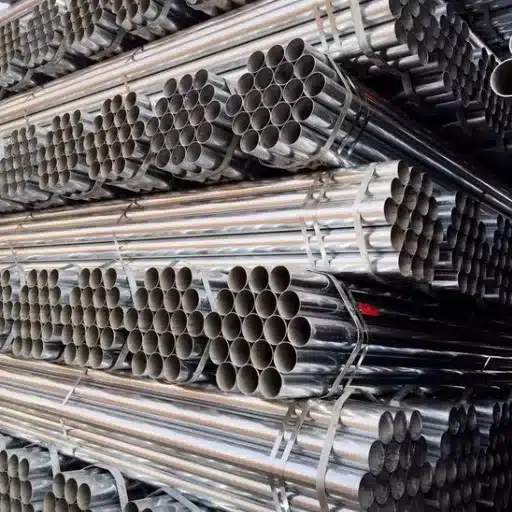Seamless austenitic stainless steel pipes have a wide range of industrial applications because of their remarkable resistance to corrosion, heat, and pressure. In regard to their manufacturing and utilization, there are different international standard systems, but the best-known is ASTM A312, which guarantees quality and service. This article has been prepared to help readers understand the different categories and standards of ASTM A312, along with its relevance and technical details, which cover the scope of applications and advantages of austenitic stainless steel seamless pipes. It will be useful to a variety of readers, including experts, personnel, and business representatives in the field.
What is Austenitic Stainless Steel Seamless Pipe and How is it Manufactured?
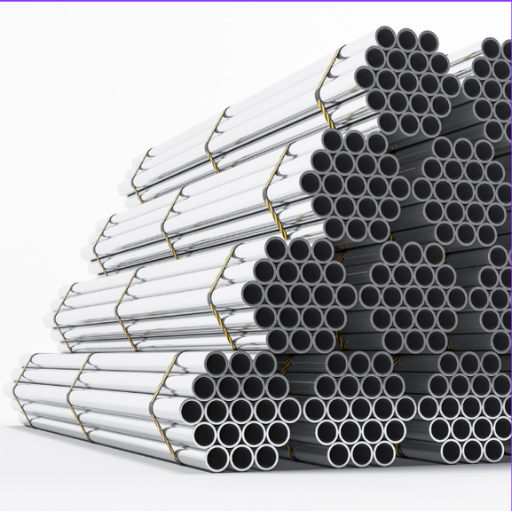
Austenitic stainless steel seamless pipes are high-performance pipes made of austenitic stainless steel due to their superior corrosion resistance, strength, and durability. These pipes are produced with no welded seam, which guarantees reliability and superior structural integrity. Their strength and reliability are critical in extremely high-pressure and high-temperature settings. The process consists of heating a solid steel billet, which is then pierced to create a hollow shell. This hollow shell is elongated and shaped into the desired dimensions through extrusion and rotary piercing. Their construction and design make them seamless and versatile, which is why they can be used across various industries such as petrochemical, oil and gas, and power generation.
Defining Austenitic Stainless Steel and Its Composition
As an example, I would tend to recommend Austenitic stainless steel because of its impressive corrosion resistance and equally useful characteristics. It mostly contains iron and has as its main alloying elements chromium and nickel, generally has more than 16% chromium and 6-10% nickel. This type of material is also very tough, resistant to high temperatures, and is able to withstand extreme high temperatures. Stabilized by nickel, the aforementioned austenitic structure ensures non-magnetic features alongside superb mechanical properties, which makes it essential in chemical processing, food production, and even aerospace industries.
The Manufacturing Process of Seamless Stainless Steel Pipe
To ensure the quality and durability in the manufacturing process of the seamless stainless steel pipe, it undergoes several steps. A solid cylindrical billet is heated and pierced to form a hollow shell. This hollow shell is then elongated and shaped using a sequence of rolling or extrusion processes to achieve the wall thickness and diameter that is desired. The pipe undergoes heat treatment, which enhances the mechanical strength and corrosion resistance of the pipe as well as refines its structure. To ensure it meets industry standards and specifications, the pipe is polished, pickled, and put through molten salts and thorough testing.
Difference Between Seamless and Welded Pipe Construction
The fundamental distinction between pipes that are seamless and welded lies chiefly in their operations and structural features. Seamless pipes are made from a solid block of steel, which is pierced and stretched to form a tube. This method allows seamless pipes to have very high strength and uniformity, which is ideal for high-pressure applications. Welded pipes, on the other hand, are made by rolling a sheet of metal into a cylinder and welding the edges. While welded parts are less strong, they are cheaper and easier to make, especially for large or low-pressure projects. Each type has different benefits depending on the requirements of the application.
What Are the Key Properties and Benefits of Austenitic Stainless Steel Seamless Pipe?
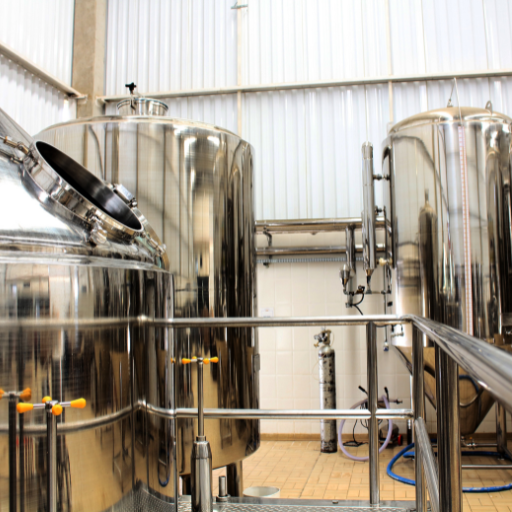
Austenitic stainless steel seamless pipes have an outstanding resistance to corrosion. Thus, they can be used in hostile environments like chemical processing and marine activities. They have low thermal conductivity but provide exceptional strength and durability. This ensures reliability in performance due to their ability to withstand high pressures and extreme temperatures. Moreover, the pipes do not get affected by magnetic fields, have great weldability, and are smooth and homogeneous, thus minimizing the chances of contamination. These factors increase their usability in sanitary applications such as the food and pharmaceutical industries.
Superior Corrosion Resistance Characteristics
Out of all the properties and advantages that austenitic stainless steel seamless pipes have to offer, I can assure you that one of their standout features is the superior corrosion resistance. The reason for such exceptional resistance to corrosion in this type of stainless steel is due to its high concentration of chromium and nickel. Allow me to outline the factors and reasons that explain this unparalleled trait:
- High Chromium Content (Around 16-26%)
In the given range, chromium governs the composition, and it also contributes to the development of a passive oxide layer on the metal surface, which acts against oxidizing substances and rust. This layer has the merit of being self-repairing, which means that it can re-establish itself when broken.
- Nickel Content (Typically 6-22%)
Apart from aiding in corrosion resistance, nickel is helpful in the case of acidic and chlorinated environments in industrial processing and marine surroundings. Economical & strong materials also gain ductility as a result of nickel content.
- Molybdenum (Optional for Certain Grades)
Applicable to grade 316 stainless steel, attributes of molybdenum assist in reducing pitting and crevice corrosion attack magnitudes in saline or high chloride content environments.
- Non-Magnetic and Stable Microstructure
Malleable alloys lack ductility, which explains why they are softer than steel; however, they have great strength. Austenitic steel is very strong without the risk of stress corrosion cracking, which is highly common in most industrial environments.
- Versatility in Temperature Extremes
Seamless pipes made from austenitic stainless steels are resistant to very low or very high temperatures, thus, they do not limit their application scope while maintaining their corrosion resistance.
Austenitic stainless steel seamless pipes are dependable for othe il and gas industries, chemical processing plants, and even architectural work exposed to the elements. These structures guarantee corrosion resistance, which greatly reduces maintenance expenses while also increasing system longevity, and, in turn, making pipelines economical and reliable for critical applications.
High-Temperature Performance and Durability
stainless steel seamless austenitic pipes are one of the best materials when it comes to durability at high temperatures. They remain structurally sound at exceptionally high temperatures, which makes them absolutely necessary in industries that need reliable performance under high-temperature conditions. Their outstanding long-term durability and stability during thermal stress are remarkable due to their incredible creep resistance. This resilience improves operational safety and efficiency in advanced applications like power generation, petrochemical processing, and heat exchangers, which demand high levels of operational accuracy.
Weldability and Fabrication Advantages
Superalloys have superb weldability as well as fabrication benefits, enabling their use in complex applications. The welding methods that can be used with these materials are sophisticated, and cracking or deformation is not a great risk, even under high stress. Moreover, these materials can be machined and formed into intricate shapes using positive and negative machining methods while maintaining their solid properties, which makes them easily adaptable to advanced engineering and manufacturing needs.
How Does ASTM A312 Standard Regulate Austenitic Stainless Steel Seamless Pipe?
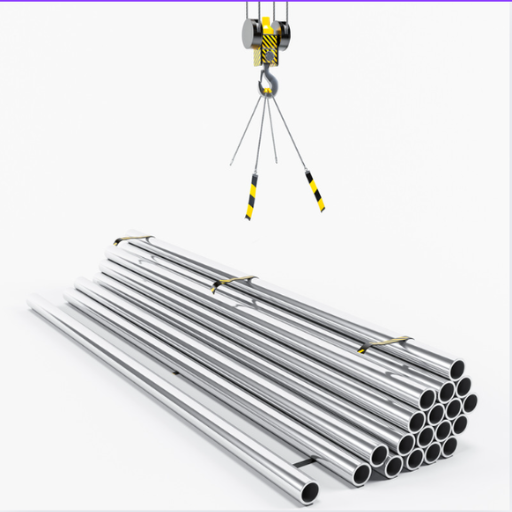
The ASTM A312 standard is of great importance regarding an austenitic stainless steel seamless pipe due to its applicability within demanding contexts. In my opinion, this standard is very strict with regard to the material’s makeup, mechanical performance, and how it is processed. It concerns itself with the allowance of alloying compounds, the products’ tensile and yield strength, as such, so that there is uniformity and standard in the outcome. It also sets forth inspection and testing requirements, like flaw detection through hydrostatic testing or nondestructive testing of some kind for possible defects. Following the guidelines of this standard helps manufacturers assure that the pipes will not fail when put under heavy load and will protect and bring confidence to the industries that depend on them.
ASTM A312 Specifications and Requirements
The ASTM A312 specification details the seamless and welded pipes made from stainless steel for high temperature and/or highly corrosive service. As these pipes are used in rigorous applications that demand high reliability and durability, there are strict requirements regarding the chemical composition, mechanical properties, and dimensional tolerances of each stainless steel pipe. Hydro testing and non-destructive testing of the pipes for flaws is also a mandatory requirement. Following these standards provides assurance of satisfactory performance and safety, which is why these pipes are widely used throughout various industries, including chemical processing, power generation, and oil and gas.
Common Grades Within ASTM A312 Stainless Steel
the most common grades used in ASTM A312 stainless steel pipes are 304, 304L, 316, and 316L. Grade 304 is somewhat of a jack-of-all-trades given its exceptional corrosion resistance, so it’s great for everything. For mildly aggressive, chemically hostile environments, grade 316 is often the go-to due to its added molybdenum content, which increases the level of corrosion resistance. As for welding applications, low-carbon variants 304L and 316L are crucial due to the reduced risk of carbide precipitation and structural weakening. Each of these grades has tailored advantages that aid engineers and designers in choosing the ideal material for the specific application.
Testing and Quality Control Procedures
As with all materials, stainless steel requires testing and quality control procedures for integrity and performance. In this case, inclusions of the common steps include tensile strength analysis, corrosion resistance analysis, non-destructive testing by ultrasonic or radiographic methods, and verifying chemical composition by means of spectrometry for compliance with grade standards. Such procedures ascertain that the material fulfills legal criteria and customer satisfaction, not to mention manufacturers’ expectations.
What Are the Different Types of Stainless Steel Seamless Pipes?
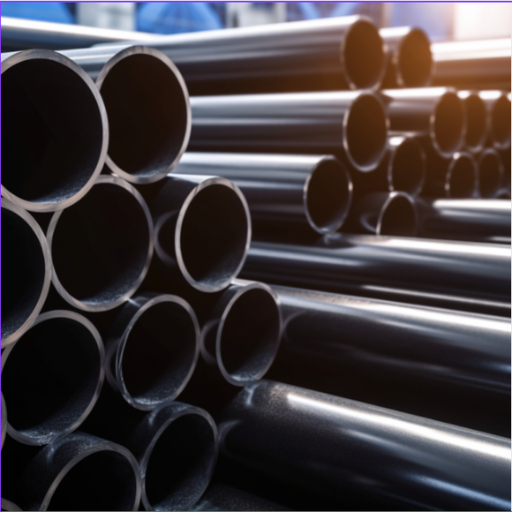
Just like other seamless pipes, stainless steel pipes have different categories, and each is made for a particular function or application. the types that are mostly used are: austenitic, ferritic, martensitic, and duplex stainless steels. Austenitic stainless pipes such as those in 3the 00 series are known for their good strength and corrosion resistance; therefore are used in very severe conditions. On the other hand, ferritic pipes have good corrosion resistance, although not as good as austenitic, but still better than many others, and due to their low cost, they are widely used in some lower stress areas. Martensitic pipes have good strength and are very resistant to wear and tear, however, they have poor corrosion resistance compared to austenitic. Ferritic stainless steel has high creep resistance but lower strength than austenitic. Combining the strength of ferritic and corrosion resistance of austenitic gives Duplex stainless steel, which is very useful in othe il and gas industries. Knowing them helps businesses identify the right materials for their specific business needs.
Austenitic vs. Ferritic Stainless Steel Comparison
Austenitic stainless steel is more suitable for applications such as food processing, chemical environments, or architecture where exceptional corrosion resistance, along with formability and weldability, are required. Unlike austenitic stainless steel, ferritic stainless steel is best suited for moderately corrosive, cost-effective applications with good thermal conductivity, like automotive exhaust systems or kitchen appliances. Ultimately, the choice lies in the operating environment and the specific performance demands of the application.
Duplex and Super Duplex Stainless Steel Varieties
Duplex and Super Duplex stainless steels are equally dependable primarily because of their two-phase microstructure, which is a combination of austenite and ferrite. This specific structure grants them great strength while minimizing corrosion. These are the main factors I look into in regard to these materials:
- Strength – Super Duplex is known to be more powerful than austenitic grades, and Duplex stainless steel due to its impressive strength, which is approximately double that of the standard Austenitic grades, such as 304 or 316. Super Duplex takes this up a notch with even higher tensile strength, making it suitable for more demanding applications.
- Corrosion Resistance – Compared to other grades, Duplex Stainless Steels have performed better in environments where exposure to Chloride and other corrosive agents is present, but Super Duplex offers superior resistance, especially against localized corrosion like pitting and crevice corrosion. This makes it relevant in extreme environments such as marine, chemical, and offshore applications.
- Cost-Effectiveness – Compared to other austenitic steels, Duplex Stainless is the most affordable which is interesting to note. However, Super Duplex is slightly more expensive due to its enhanced properties. However, the long-term spending from its durability and corrosion resistance often justifies the investment.
- Applications – Oil and gas industries, construction, and storage tanks utilize duplex for its moderate resistance to corrosion and dependable strength. Super duplex excels in harsh environments such as desalination plants, chemical processing, and subsea pipelines, as it can withstand higher pressures and aggressive conditions.
By evaluating these parameters in your specific operating environment, you can make the right choice for your application. If you’re unsure about a particular use case, always factor in the exposure to corrosive elements, required strength, and budget constraints to guide your decision. I hope this breakdown makes it a bit easier to understand!
Martensitic Stainless Steel Applications
Martensitic stainless steel is extensively utilized in industries that involve high strength, adequate corrosion resistance, and wear resistance. Some common industrial applications include turbine blades, knife blades, surgical tools, fasteners, and shafts in pumps. Martensitic stainless steel can also be subjected to heat treatment for additional hardness, which makes it an excellent choice for parts that undergo severe mechanical stress and require high durability.
What Industries and Applications Use Austenitic Stainless Steel Seamless Pipe?
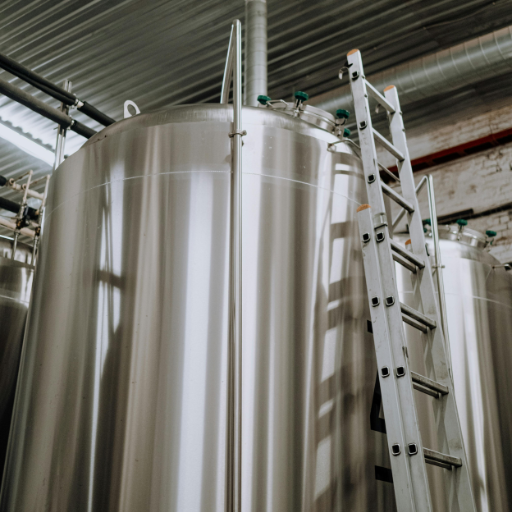
The seamless pipes of austenitic stainless steel have remarkable formability and domain-specific high-temperature strength. Their properties make them useful across numerous industries. These pipes are a mainstay for transporting corrosive fluids and gases in the chemical and petrochemical industries. Moreover, these pipes also find use in the food and beverage industry, where hygiene, along with resistance to acidic substances, is a must. These pipes find widespread application in power generation, pharmaceutical production, construction projects, and other domains needing high reliability and extensive service life. Their resilience makes them versatile components in these demanding environments across multiple sectors.
Oil and Gas Industry Applications
Due to factors such as corrosion resistance, extreme durability, and the ability to endure high pressures and temperatures, stainless steel pipes are critical in the oil and gas industry. Their usage in pipelines, offshore platforms, and refinery equipment is prevalent as reliability and safety are critical in these operations. Even in inhospitable conditions such as deep-sea operations and deserts, these pipes aid in the effective transportation of oil, natural gas, and other fluids. The outstanding strength, low maintenance requirements, and cost benefits make these pipes a clear choice for industry.
Chemical Processing and Heat Exchangers
I have no doubt that heat exchangers and chemical processing systems require the use of pipes made of the best quality materials in the industry. They need components capable of withstanding aggressive corrosive fluids, elevated temperatures, and substantial fluctuations in pressure. Pipes fabricated from stainless steel and its alloys are particularly useful since they provide a high level of corrosion resistance while withstanding harsh conditions. Furthermore, for stainless steel pipes to be used in heat exchangers, they must also not scale and thermally conduct efficiently. Selecting the proper materials for these applications ensures that system operational effectiveness, safety, and reduced maintenance expenditure over time are achieved.
Food Processing and Pharmaceutical Uses
Due to outstanding sterilization, stainless steel pipes are widely used in the food processing and pharmaceutical sectors for hygienic purposes. They do not allow contamination from substances, and corrosion allows for them to be cleaned thoroughly. Because these pipes are so important to maintaining safety and compliance with industry standards, their construction is seamless and durable. These pipes also support rigorous cleaning processes which is why they are indispensable in regard to safety. These pipes are enhanced in there sensitivity rely due to their strangth and construction.
How Does Austenitic Stainless Steel Compare to Carbon Steel Pipe?
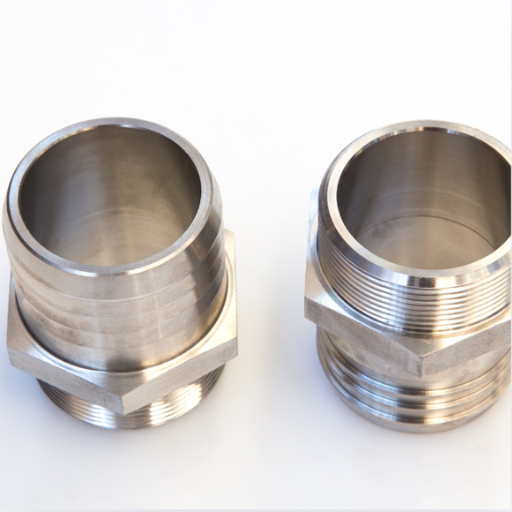
Carbon steel pipes are often replaced with austenitic stainless steel pipes due to their superior performance in many domains. The most important distinction is associated with corrosion resistance. Austenitic stainless steel performs exceptionally well in environments rich in moisture, chemicals, or salt compared to carbon steel, which, in the absence of protective coatings, will corrode over time. Moreover, austenitic stainless steel retains its strength and toughness over a wide range of temperatures, making it suitable for extreme heat as well as cryogenic conditions. Although carbon steel is economical and strong under certain conditions, it is not as versatile or resilient. In industries that require high purity, such as pharmaceuticals and food processing, austenitic stainless steel provides reliable sterilization and hygienic qualities that are unmatched when compared to carbon steel.
Strength and Hardness Comparisons
In comparison to carbon steel, austenitic stainless steel usually has a lower hardness but greater ductility and toughness. Carbon steel can be more brittle and corrode more readily over time, but it does have the advantage of higher hardness from heat treatment. For environments that require strength and resistance to harsh conditions, austenitic stainless steel offers superior performance, which makes it the alloy of choice for applications that require enduring durability and reliability.
Corrosion Resistance and Longevity Differences
I noted that corrosion resistance and longevity differences between carbon steel and stainless steel are rather striking. Thanks to chromium, which forms an oxide protective layer, stainless steel, especially in its austenitic forms, is exceptionally resistant to corrosion. Thus, it is well suited for applications where moisture, chemicals, or other corrosive agents are present. While strong and versatile, carbon steel is far more vulnerable to rust and degradation if not well maintained. In terms of stainless steel, carbon steel takes ga greater time, but stainless steel is easier to maintain and doesn’t corrode at the same rate. This ultimately results in stainless steel being a more dependable and cost-efficient solution for critical applications.
Cost Considerations and Value Analysis
During the assessment of the cost factors, it is noticeable that stainless steel possesses a greater upfront cost in comparison to carbon steel. However, the outstanding durability, corrosion-resistant properties, and low maintenance cost of stainless steel culminate in substantial savings over a prolonged period. For critical applications that value longevity and reliability, stainless steel offers greater value. Although carbon steel is more affordable at the start, the ongoing maintenance, potential repairs, and shorter overall lifespan negate the savings. Hence, both materials emphasize not only the initial price but also the total cost of ownership during the lifespan of the application.
What Are Common Pipe Fittings and Accessories for Austenitic Stainless Steel Seamless Pipe?
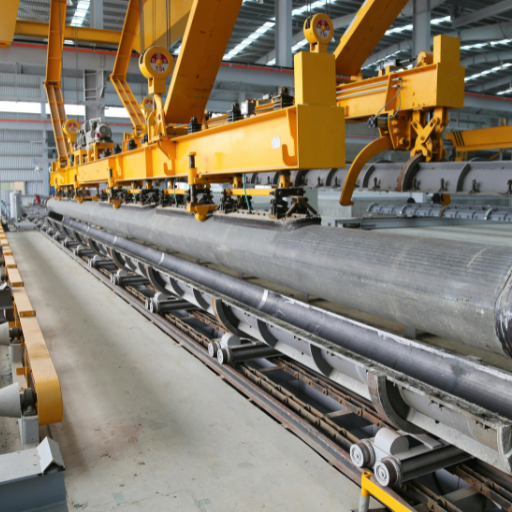
In relation to austenitic stainless steel seamless pipes, the most utilized pipe fittings and accessories are elbows, tees, reducers, caps, and couplings. In line with what I know, elbows are often utilized to change the direction of flow, while tees and reducers serve as vital fittings for branching and changing to a smaller pipe size. Caps serve the purpose of closing the open ends of pipes, while couplings provide the required tightness between two pipes. Moreover, for bolted flange attachments, gaskets are complementary materials that flanges need for creating tight and non-leaking joints. Their design ensures that these accessories and austenitic stainless steel stems remain effective in a myriad of uses without compromising their exceptional resistance to corrosion and durability.
Compatible Fittings and Connection Methods
The Austenitic stainless steel possesses broad adaptability to numerous fittings and connection techniques. These include elbows, tees, reducers, and unions which serve to directional and size alterations along with connecting requirements. For optimum secure connections, employing welding techniques, threaded joints, or even grooved couplings are widely acceptable. Each option is selected for a specific purpose while guaranteeing strength, leak-proof, and corrosion-resistant performance that suits the material’s properties.
Heat Treatment Requirements for Joints
The application and material dictate the requirements for the treatment of the joints. In my experience, joints require treatment with precision and care, as they require a lot of time and attention to detail. For example, the carbon steel requires post-weld heat treatment (PWHT) because it relieves residual stress while also enhancing the structure on a metallurgical scale to fortify durability. Strength and toughness may require unloading specific heating and cooling cycles in alloy steels. Even though care should be taken to avoid cracking and distortion, critical adherence to temperatures in industry standards, ASME or API, is crucial. In my professional career, I have noted that under dire circumstances and tough conditions, with the proper heat treatment, the reliability and lifespan of the component undergo enhancement.
Proper Installation and Maintenance Practices
To achieve the desired functionality and service life of components in industrial settings, it is critical to observe proper practices of installation and maintenance. For instance, the installation process should adhere to the manufacturer’s instructions as well as the relevant industry standards with regard to positioning, fastening, and sealing to eliminate undue tension and leaking. Regular inspections, maintenance, and lubrication of machinery, as well as timely replacement of worn-out parts, are vital to reduce breakdowns. Establishing schedules for preventive maintenance and educating staff on the proper methodologies can greatly reduce the equipment downtime while increasing its life expectancy.
Reference
- ASTM A312 Standard Specification on ASTM.org – Official ASTM documentation for seamless and welded austenitic stainless steel pipes.
- A312 Pipe Specification (Grades 304/L & 316/L) on Amerpipe – Detailed specifications for ASTM A312 pipes.
- ASTM-A312.pdf on Barametall – A comprehensive PDF document covering ASTM A312 standards.
Frequently Asked Questions (FAQs)
Q: What are the key differences between austenitic and ferritic stainless steel seamless pipe?
A: Austenitic stainless steel seamless pipe and ferritic stainless steel have several fundamental differences. Austenitic stainless steel is non-magnetic and contains high levels of chromium (16-26%) and nickel (6-22%), while ferritic stainless steel has exceptional magnetic properties and contains primarily chromium (10.5-27%) with minimal nickel. Austenitic grades (like those in ASTM A312) cannot be hardened by heat treatment but can be strengthened through cold-worked processes. They offer superior corrosion-resistant properties, particularly in harsh environments. Ferritic and austenitic stainless steels also differ in toughness and plasticity, with austenitic grades offering better formability and ductility at varying temperatures.
Q: How is ASTM A312 seamless steel pipe manufactured and annealed?
A: ASTM A312 seamless steel pipe is manufactured through a hot extrusion process where solid billets of stainless steel are heated and pushed through a die to create a hollow form. This is followed by multiple stages of rolling to achieve the desired dimensions. After forming, the pipe undergoes an annealing process (solution annealing) where it’s heated to approximately 1900-2050°F (1040-1120°C), depending on the specific alloy, and then rapidly cooled. This annealing process dissolves carbides, relieves internal stresses, and restores the material’s corrosion resistance that might have been compromised during forming. The strict carbon content limits in A312 (typically under 0.1% for many grades) help ensure the material maintains its corrosion resistance properties after welding.
Q: What are the main classifications of stainless steel seamless pipe under ASTM A312?
A: ASTM A312 classifies stainless steel seamless pipe into several grades based on composition and properties. The most common classifications include TP304/304L, TP316/316L, and TP321, which are all austenitic chromium-nickel stainless steels. The “TP” prefix stands for “Temperature Pipe.” The 300-series represents austenitic grades, while the “L” suffix indicates low carbon content (max 0.03%). Other notable grades include TP347 (stabilized with niobium), TP310 (high-temperature service), and special alloys like 904L for extremely corrosive environments. Each classification has specific chemical compositions, with variations in chromium, nickel, molybdenum, nitrogen, and other elements to provide particular performance characteristics based on application requirements.
Q: How does alloy composition affect the performance of austenitic stainless steel pipe?
A: Alloy composition dramatically impacts austenitic stainless steel pipe performance. Chromium (typically 16-26%) provides basic corrosion resistance by forming a passive oxide layer. Nickel (6-22%) stabilizes the austenitic structure and improves resistance to stress corrosion cracking. Molybdenum enhances pitting resistance, particularly in chloride environments. Nitrogen increases strength and pitting resistance. Carbon content is typically kept low (often below 0.1%) to prevent sensitization and maintain corrosion resistance after welding or heat exposure. Elements like titanium or niobium may be added as stabilizers. Higher alloy content generally results in superior corrosion resistance but also increases cost. Pipe manufacturers carefully balance these elements to achieve optimal performance for specific application environments, from mild to extremely aggressive conditions.
Q: How does ASTM A312 compare to other standards like ASTM A53, ASTM A795, ASTM A135, ASTM A252, or ASTM A500?
A: ASTM A312 specifically covers austenitic stainless steel seamless (SMLS) and welded pipe, while the other standards address carbon and alloy steel pipe for different applications. ASTM A53 covers black and hot-dipped galvanized carbon steel pipe for mechanical and pressure applications. ASTM A795 is for black and hot-dipped zinc-coated steel pipe for fire protection. ASTM A135 covers electric-resistance-welded steel pipe for pressure applications. ASTM A252 is for welded and seamless steel pipe piles. ASTM A500 covers cold-formed structural steel tubing. Unlike these carbon steel standards, A312 requires specific chemical compositions, corrosion-resistant properties, non-magnetic characteristics (for austenitic grades), and special heat treatments. A312 generally has stricter quality requirements and testing procedures due to the critical nature of the applications where stainless steel pipe is used.
Q: What are the key considerations when selecting austenitic stainless steel seamless pipe for offshore applications?
A: For offshore applications, several critical factors should be considered when selecting austenitic stainless steel seamless pipe. First, extreme corrosion resistance is essential due to constant exposure to seawater, which makes high-molybdenum grades like 316L or super austenitic alloys like 904L preferable. Chloride stress corrosion cracking resistance is crucial, as seawater contains high chloride levels. Mechanical properties must withstand dynamic loading from waves and currents. Temperature resistance matters for both cold waters and high-temperature process applications. Proper material certification and traceability are mandatory for offshore installations. Additionally, compatibility with cathodic protection systems, weldability for field modifications, and long-term durability under marine growth and biofouling conditions must be evaluated. The specific pipe grades should align with industry standards like NORSOK or API requirements for offshore service.
Q: What are the advantages of austenitic stainless steel pipe compared to coated steel pipe or other structural steel options?
A: Austenitic stainless steel pipe offers several advantages over coated steel pipe and other structural steel options. It provides inherent corrosion resistance without requiring additional protective coatings that can chip, scratch, or degrade over time. Stainless steel has exceptional resistance to a wide range of chemicals and environments, providing longer service life with minimal maintenance, particularly in aggressive conditions. While the initial cost is higher than carbon steel, the total lifecycle cost is often lower due to reduced maintenance and replacement expenses. Austenitic grades maintain their mechanical properties across a wide temperature range (-320°F to 1500°F) and offer excellent toughness at cryogenic temperatures. They’re also fully recyclable, hygienic (important for food/pharma applications), fire/heat-resistant without toxic emissions, and aesthetically pleasing without requiring painting or coating.
Q: How does the manufacturing process affect the quality of SS seamless pipe?
A: The manufacturing process significantly impacts SS seamless pipe quality. The initial steel melt composition control is critical – precise alloy element balancing ensures proper mechanical properties and corrosion resistance. Impurity levels must be strictly controlled. During hot extrusion and piercing, temperature uniformity prevents defects like cracks or uneven wall thickness. Proper annealing is essential to dissolve carbides and relieve stresses. Cold working, if applied, must be carefully controlled to prevent excessive hardening. Surface finishing processes remove scale and create the appropriate surface finish. Quality control measures, including hydrostatic testing, non-destructive examination (ultrasonic, eddy current), microstructure evaluation, and mechanical testing,g are vital. Reputable pipe manufacturers implement stringent quality management systems throughout production. Improper processing can lead to sensitization, reduced corrosion resistance, dimensional inconsistencies, or mechanical property variations that compromise performance in service.
Q: Why is the carbon content limited in austenitic stainless steel pipe, and how does it affect steel plate production?
A: Carbon content is strictly limited in austenitic stainless steel pipe (typically to 0.08% or lower, with “L” grades limited to 0.03%) primarily to prevent sensitization – a phenomenon where chromium carbides form at grain boundaries during heat exposure (800-1500°F), depleting chromium from adjacent areas and compromising corrosion resistance. Lower carbon content minimizes this risk, particularly important when welding or in high-temperature service. For steel plate production (the precursor to pipe in many cases), lower carbon creates manufacturing challenges requiring precise temperature control during hot rolling to ensure proper grain structure. The reduced carbon must be compensated for with nitrogen additions to maintain mechanical properties. This affects the steel melting process, requiring special refining techniques like AOD (Argon Oxygen Decarburization) and careful control of nitrogen content to achieve both workability in plate form and the final properties needed in the finished pipe.
Q: What testing methods are used to ensure ASTM A312 pipe meets the required standards for alloy steel pipe applications?
A: ASTM A312 pipe undergoes rigorous testing to ensure compliance with standards for critical alloy steel pipe applications. Chemical composition analysis verifies the correct levels of chromium, nickel, molybdenum, and other alloy elements. Mechanical testing includes tensile tests for yield and tensile strength, elongation for ductility assessment, and hardness testing. Hydrostatic testing confirms pressure-holding capability. Non-destructive examination methods include ultrasonic testing for internal defects, eddy current testing for surface flaws, and radiographic testing for critical applications. Flattening and flaring tests verify formability. Intergranular corrosion tests (like ASTM A262) confirm resistance to sensitization. Microstructure examination evaluates grain size and phase distribution. For special applications, additional tests may include impact testing, pitting resistance testing, and stress corrosion cracking evaluation. All testing must be performed by qualified personnel following strict procedures, with complete documentation for traceability.






